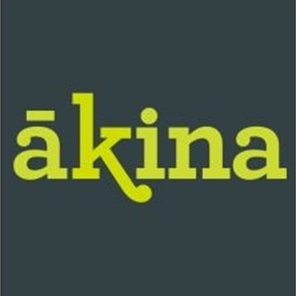A Tale Of Two Labour Markets
- US labour market conditions remain robust. Over 140k jobs were added in January, and wage growth accelerated. The data supports the Fed’s careful and cautious approach to further easing.
- Meanwhile, the Kiwi labour market is still playing catch up. Employment was soft, the unemployment rate climbed to a four-year high and wage growth continues to soften. The data demands further easing from the RBNZ, beyond February.
- Our COTW takes a closer look at the latest jobs report. We cover who and which industries are being hit the hardest.
Here’s our take on current events
Last week provided an update on the health of both the US and Kiwi jobs markets. And the difference between the two couldn’t be more obvious. The US economy saw jobs growth (143k jobs added in January), a fall in the unemployment rate (from 4.1% to 4%), and an acceleration in wage growth (from 3.9%yoy to 4.1%yoy). Here at home, we saw the opposite… employment contracted (see COTW), the unemployment rate continued to climb, and wage growth trended lower. By many measures, the US labour market remains robust. And with inflation pressures still lingering in the US, the data supports the Fed’s caution toward further easing. Meanwhile, Kiwi inflation is well contained, and Kiwi labour market conditions are weak. Domestic data demands more easing from the RBNZ.
The Kiwi labour market report for the December quarter was ugly. The unemployment rate rose from 4.8% to 5.1% - the highest in four years. The labour force participation rate also continued to normalise from record high levels, falling to 71%. Workers are stepping away from the market as hiring appetite has slowed. The underutilisation rate – a better measure of slack in the market – lifted from an already high 11.6% to 12.1%. And the ongoing rise suggests that spare capacity within the broader market is still growing. Measures beneath the umbrella term also moved higher with the underemployment rate – those working part-time and wanting more hours – rising from 4.0% to 4.8%.
The total number of hours worked have been in decline since March last year. With hours worked falling for four straight quarters, the annual print is far from pretty. Outside of the 2020/21 covid period, the number of hours worked recorded the deepest annual decline since 2009. In 2024, total hours worked fell 2.5%, reminiscent of the 3.3% slide in 2009. The cut back in hours and staff was an inevitable outcome for the labour market given the RBNZ’s delivery of aggressive rate hikes. And fewer hours is another warning sign of weak economic activity.
We’re seeing more moderation in wage inflation. The private labour cost index (LCI) – a measure of pure wage inflation – was steady at 0.6% over the quarter. Annually, the wage bill edged down to 2.9% from 3.4%. And the distribution of wage growth showed a lift in the proportion receiving no change in take-home pay, from 37% to 40%. Among the 60% of jobs that received a pay rise, the majority are facing pay increases between 3% and 5%. It’s yet another clear sign of softening employment demand.
We are hopeful that a recovery in the second half of this year should help businesses avoid further significant cuts to headcount. But should we not get the required rate relief from the RBNZ, the risk of further job losses only grows. It’s why we think the RBNZ will need to deliver more than they have signalled this year. When we last heard from the RBNZ, in November, they signalled another two cuts to 3.5% this year, and a very slow move to 3% deep into 2026/2027. Why wait? Why muck around? That leaves conditions too tight for too long. We argue we need to get to 3% (neutral) this year. Especially with inflation already stabilising at 2%. Holding out for longer is just going to cause unnecessary and indeed avoidable damage to the labour market.
Charts of the Week: Men hit hardest, but growing hopes for construction.
Looking deeper into the details of the recent labour market report reveals sobering weakness. Worker demand continues to wane, with employment contracting 0.1% over the quarter, and down 1.1% over the year. It marks the second consecutive annual decline for employment growth and the deepest since the GFC.
Digging into the demographics, men have borne the brunt of job losses in 2024. Of the 32k decline in employment, 85% were men. According to Stats NZ, employment losses were concentrated in male-dominated occupations – notably, technicians and trades workers, and machinery operators and drivers.
The bulk of job losses over the year were concentrated in the agricultural sector (20%), as well as retail trade (19.6%) and manufacturing (14.8%). Somewhat surprisingly, job losses across the construction sector were not as deep as we’d expect given the downturn in activity. Construction made up just 2.2% of total job losses in 2024. We’d expect a larger share, but employment expanded 3.2% over the December quarter, breaking a six-quarter streak of either flat or declining jobs growth. It’s still early days, but it may be the beginning of a (slow) recovery for the construction industry. We’re hopeful for a gradual expansion in the sector from here as lower interest rates and a warmer housing market support the industry.




 Commerce Commission: Commission Concludes Auckland Airport Over-charging By $190 Million
Commerce Commission: Commission Concludes Auckland Airport Over-charging By $190 Million The Future Is Rail: Ferry Decision - Common Sense Prevails
The Future Is Rail: Ferry Decision - Common Sense Prevails Aotearoa Food Rescue Alliance: Grocery Market Reform Must Include Mandatory Food Rescue Partnerships
Aotearoa Food Rescue Alliance: Grocery Market Reform Must Include Mandatory Food Rescue Partnerships Hugh Grant: Zero Trust Security - A Buzzword Or The Ultimate Protection?
Hugh Grant: Zero Trust Security - A Buzzword Or The Ultimate Protection? Bill Bennett: Comcom revisits fibre rules as competition intensifies
Bill Bennett: Comcom revisits fibre rules as competition intensifies Bill Bennett: Download Weekly Extra - InternetNZ disrupted
Bill Bennett: Download Weekly Extra - InternetNZ disrupted



